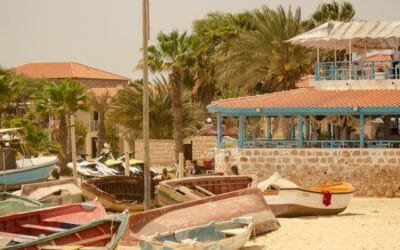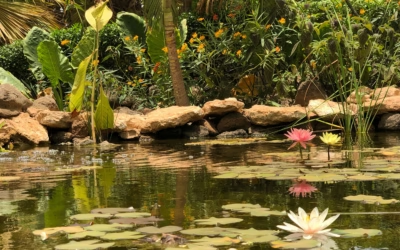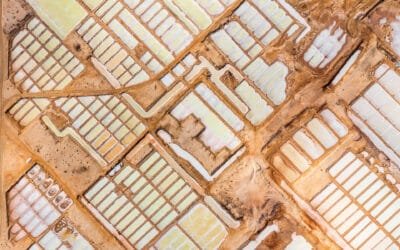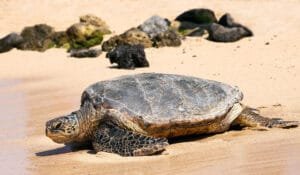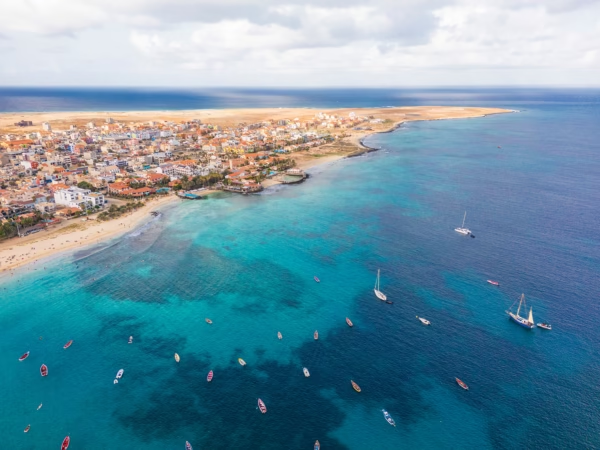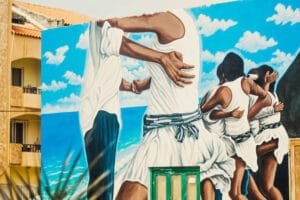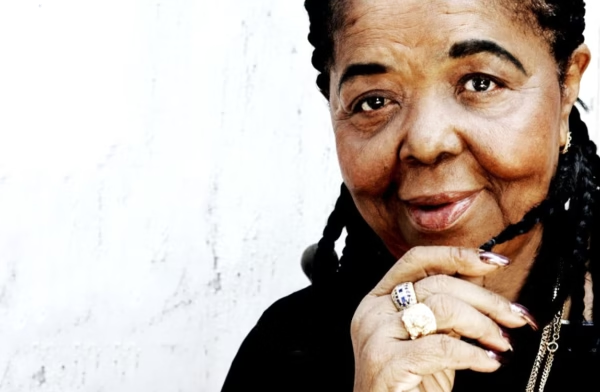Ponta Preta: Discover One of Sal’s Most Famous Beaches
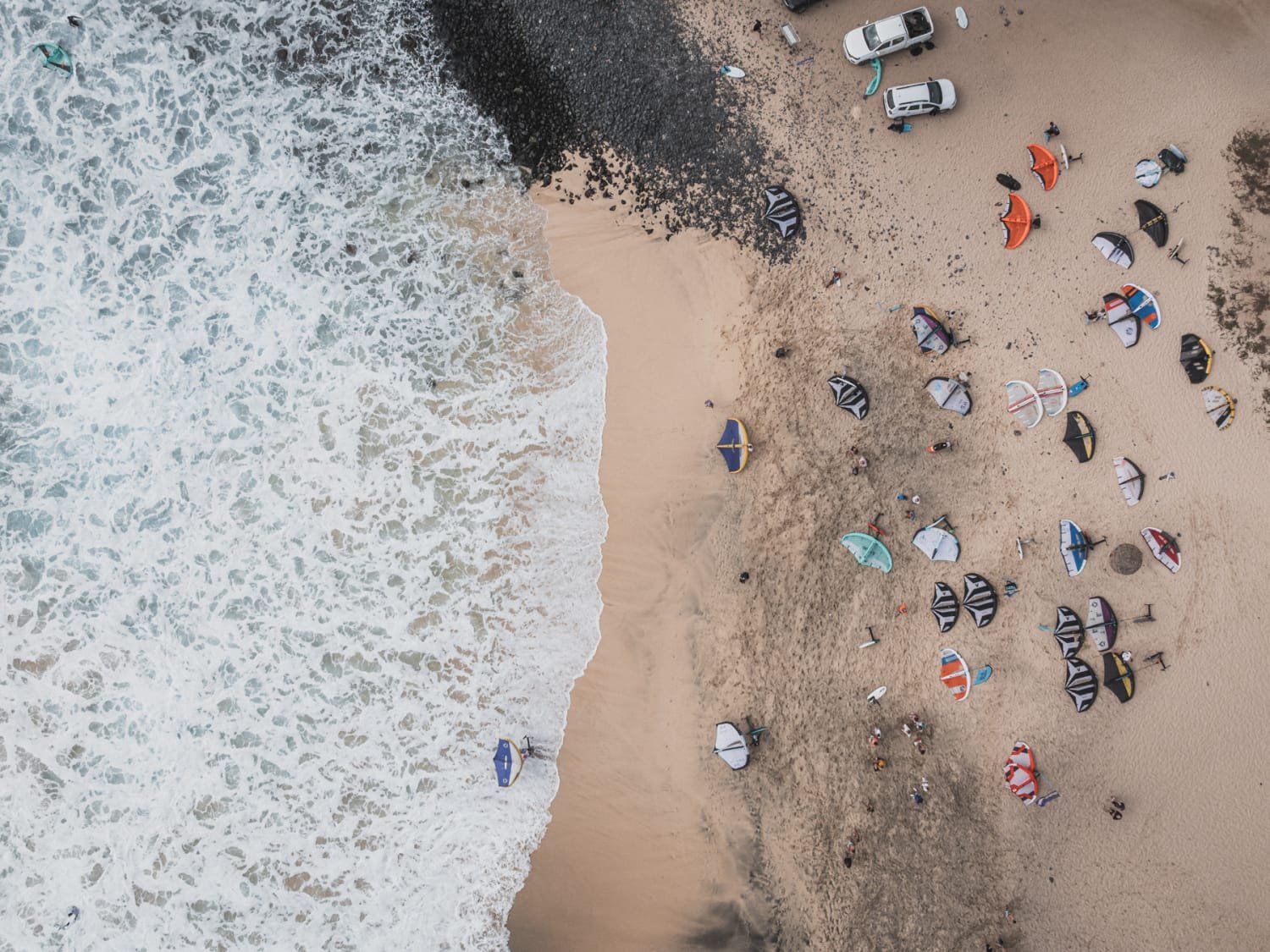
Ponta Preta
Ponta Preta is one of Sal Island’s most famous beaches, situated about 3 km west of Santa Maria on the island’s south-west coast. It is best reached by a short taxi ride, rental car, or even on foot for those staying in Santa Maria, as the walk along the coast takes around 30–40 minutes.
The beach is renowned for its powerful Atlantic swells, making it a world-class spot for surfing and kitesurfing, especially during the winter months when waves can reach up to 4–6 metres. Each February, it hosts stages of the GKA Kite World Tour, attracting elite riders and spectators. Unlike Santa Maria’s main beach, Ponta Preta is less developed, with limited facilities – mainly a beach bar and a few shaded areas – so visitors are advised to bring water, snacks, and sun protection.
The strong currents and heavy shore break mean it is not ideal for casual swimming, but for experienced surfers and kiters, Ponta Preta is considered the ultimate challenge on Sal.
The Secret Paradise
Five minutes west of Santa Maria’s package tours and poolside cocktails, Ponta Preta belongs to a different world. The beach earned its Portuguese name from the dark volcanic rocks scattered across golden sand, but ask any professional surfer about this stretch of Sal Island coastline and they’ll tell you about something else: careers made and broken in these waves.
Stage for Champions and Dreamers
Cash Berzolla was crying when they handed him the trophy. The American had just claimed the 2025 GWA Wingfoil World Cup title at Ponta Preta. And even for someone who’d spent years chasing this moment, the emotion was overwhelming “It’s not about the winning, it’s about the moment,” he managed through tears. Spain’s Nia Suardiaz definitely understands it. She’d just secured the women’s title on the same waves that had been humbling athletes since competitions first arrived here in 2011.
What transforms ordinary surfers into champions at Ponta Preta isn’t visible from shore. The reef below creates waves that demand commitment at precisely the wrong moment — when instinct screams retreat, champions accelerate. Five-meter faces barrel over razor-sharp coral. Cross-shore winds that would close most beaches actually improve conditions here, allowing kitesurfers to launch into manoeuvres that seem to mock gravity.
Mitu Monteiro (@mitumonteiro) has watched this evolution from both sides. The Cape Verdean competed here when Ponta Preta was just another local break. Now, television crews transform his home beach into an amphitheatre each February. Judges with clipboards scrutinise every bottom turn. Athletes from thirty countries share the lineup. Yet between competitions, it returns to what it’s always been — a handful of locals trading waves while tourists splash in the shallows of Santa Maria, oblivious to the theatre playing out down the coast.
The Dancing Line Between Tourism and Nature
Development stops where the Ponta do Sinó nature reserve begins. This isn’t an accident or oversight — it’s the result of decades-long battles between conservationists who catalogue nesting sites and developers who see vacant beachfront. So far, the birds are winning.
Morning brings the ornithologists. They count Kentish Plovers picking through tide pools. Cape Verdean Iago Sparrows nest in the scrub behind the dunes. Whimbrels probe the wet sand with curved bills designed by evolution for this exact purpose. These aren’t charismatic megafauna that inspire donation campaigns, but their presence indicates something working correctly in an archipelago where much has already been lost.
Project Biodiversity volunteers patrol nearby beaches during turtle season, but Ponta Preta itself sees fewer nests than the protected stretches further north. The human activity — even though it remains limited — creates enough disturbance to push loggerheads elsewhere. It’s a trade-off measured in competitions hosted versus hatchlings lost, tourist dollars against biodiversity indices.
Two restaurants anchor the beach’s minimal infrastructure. During competition weeks, they serve hundreds of meals daily. The rest of the year, they survive on locals escaping Santa Maria’s cruise ship crowds and the occasional surfer who understands that empty lineups are worth more than amenities.
The Economics of Empty Beaches
Tour operators in Santa Maria rarely mention Ponta Preta. There’s no commission in sending tourists to a beach with two restaurants and no gift shops. The economic model here runs counter to everything that transformed Sal from a salt-harvesting backwater to a package-holiday destination.
The Meliá Tortuga Beach complex sits close enough for guests to walk over, far enough that most don’t bother. Properties of Hotel Riu cluster along Santa Maria’s shores. Their all-inclusive packages create these strange, sealed ecosystems from where visitors rarely go out and never have to handle local currency.
Ponta Preta exists outside this bubble. Surfers pay cash for grilled fish. Photographers often hire local guides who know which tide pools reflect sunset perfectly. Competition organisers rent houses in Santa Maria, spreading economic impact beyond beachfront properties.
This arrangement satisfies no one completely and everyone partially. Resort operators eye the empty beach with acquisition instincts. Conservationists document every encroachment. Athletes worry that development would destroy the very conditions that make Ponta Preta matter. Local business owners want more visitors but fear the transformation tourism brings. The tension holds, for now.
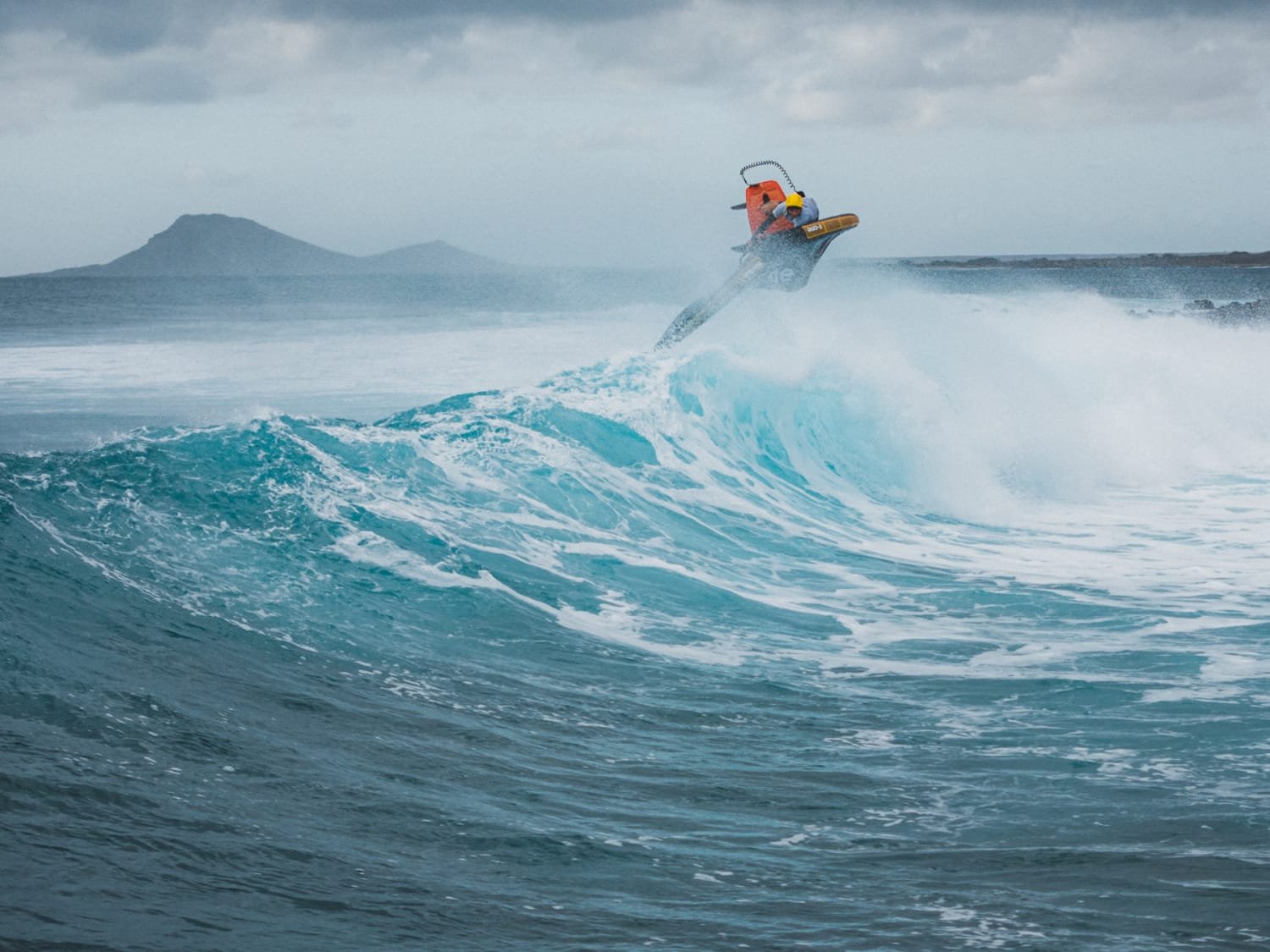
Seasons of Transformation
Summer transforms Ponta Preta into something locals barely recognise. Waves disappear. Sand accumulates week by week until the beach extends fifty meters further than winter visitors would believe possible. Families spread blankets where February’s waves crashed overhead. Children build castles from sand that will vanish with October’s first real swell.
Winter belongs to the athletes. Northern hemisphere storms generate swells that travel thousands of miles before detonating against Sal’s reefs. The beach shrinks as waves reclaim summer’s sand deposits, exposing rocks that spent months buried. Water that looked inviting in August becomes a washing machine that humbles even the most experienced watermen.
The wind never truly stops. Trade winds blow 300 days a year, their consistency making Sal a kitesurfing mecca while drawing casual beach-goers toward sheltered coves. Temperatures range from 25 to 27 degrees Celsius year-round. It’s warm enough for board shorts and cool enough for wetsuit tops, which provide comfort during long sessions. Rain falls perhaps ten days a year, usually in brief September showers that barely dampen the dust before evaporating.
The Technical Pursuit of Perfection
Understanding Ponta Preta’s hydrodynamics requires more than YouTube tutorials. The reef creates a playing field where physics meets athletic ambition. Swells approaching from the northwest encounter the reef at an angle that produces long, peeling rights. The wave face steepens predictably in certain sections, allowing surfers to anticipate where to initiate manoeuvres.
Kitesurfers read different signs. They calculate wind angles against wave direction, seeking the mathematical sweet spot where lift overcomes gravity long enough to complete rotations that would otherwise be impossible. The margin for error shrinks to nothing when launching above coral that has already claimed countless boards, fins, and pride.
Competition judges understand these nuances. They score not just successful manoeuvres but the commitment required to attempt them. A failed aerial in a critical position scores higher than a safe turn on the shoulder. This reward structure pushes athletes toward spectacular crashes that make highlight reels for all the wrong reasons.
Local knowledge matters more here than most breaks. The reef contains channels invisible from shore but apparent to those who’ve paid their dues. Paddling out through the wrong section guarantees a beating.
Entering the water at the right moment, in the right spot, means the difference between reaching the lineup fresh or exhausted before catching a single wave.
Where Cultures Converge on Sand
Saturday mornings at Ponta Preta sound like the United Nations. Portuguese instructions mix with German observations, and French exclamations follow Brazilian celebrations. Young Cape Verdeans study visiting professionals with intensity, absorbing techniques they’ll practice after the foreigners leave.
This cultural collision produces unexpected friendships. A Japanese photographer shares lunch with a local fisherman. Italian kitesurfers teach Cape Verdean kids to read wind patterns. Everyone learns the universal surf language—a nod toward an approaching set, a whistle warning of a closeout, hands indicating whether someone’s going left or right.
Morabeza infuses these interactions. The Cape Verdean philosophy of hospitality manifests in subtle ways. Locals indicate safe channels through the reef. Restaurant owners keep kitchens open for late sessions. And children help tourists understand why low tide means walking further to reach water that is suitable for swimming. These gestures cost nothing but create connections that bring people back year after year.
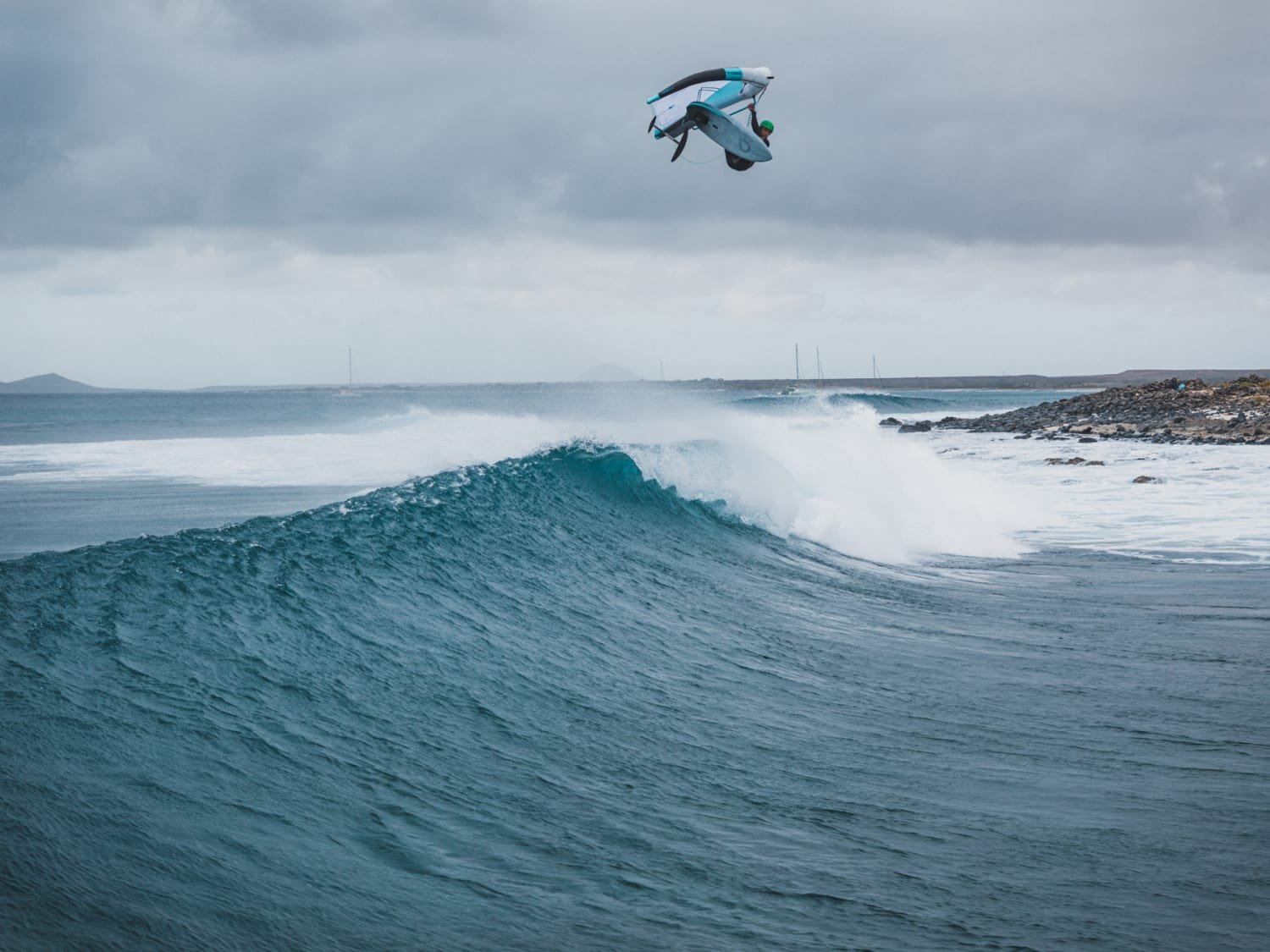
The Future Written in Sand and Swells
Every proposal to develop Ponta Preta triggers the same arguments. Investors present architectural renderings of resorts that would “complement the natural beauty of the area.” Conservationists counter with species surveys and climate projections. Athletes submit petitions demanding protection for competition venues. The government weighs tax revenue against environmental heritage.
The compromise emerging satisfies no one entirely. Limited development focused on competition infrastructure — judge’s towers, athlete facilities, media centres that can be dismantled between events. Improved road access balanced against strict building restrictions within sight of the beach. Sustainable tourism that generates revenue without destroying what makes Ponta Preta valuable.
The young Cape Verdeans training here represent another promising future. Several have already reached international podiums. Their success creates role models for children who might otherwise see no future beyond working in hotels or fishing. Surf schools employ local instructors who earned credentials by competing internationally. Prize money from competitions funds small businesses. The economic ecosystem that developed around high-performance athletics offers nice alternatives to mass tourism.
Practical Wisdom for Visiting Ponta Preta
Timing matters more than equipment at Ponta Preta. Morning sessions before 10 AM offer cleaner conditions and smaller crowds. Afternoon winds build predictably, improving conditions for kiters while making surfing increasingly challenging. Low tide exposes the reef, creating spectacular but dangerous barrels. High tide provides more forgiving conditions but less spectacular waves.
Reef boots aren’t optional — they’re survival equipment. Sea urchins carpet the bottom, their spines penetrating even thick neoprene. Fins disappear into crevices that grab leashes. First-aid supplies should include tweezers for spine removal, antiseptic for coral cuts, and the phone number of Santa Maria’s medical clinic.
Local surf schools assess students’ abilities before accepting them for Ponta Preta sessions. This isn’t elitism but safety. Beginners belong at Santa Maria’s sandy-bottom breaks. Intermediate surfers should demonstrate competence at less demanding reef breaks before attempting Ponta Preta. Even experts benefit from local guides who know where waves close out versus where they peel predictably.
Equipment rental in Santa Maria covers the basics. However, serious athletes typically travel with their own personal gear.
The Return from Ponta Preta
Afternoon shadows lengthen across Ponta Preta. Exhausted athletes dissect sessions over Strela beers. Photographers review images, deleting hundreds to preserve the few that capture what makes this place matter. Couples walk the tide line, their footprints lasting exactly as long as the waves and wind allow.
Pedro Silva will return tomorrow morning, as he has for fifteen years. Not because anyone expects him to, not for money or fame, but because the dawn patrol owns something that can’t be purchased or packaged. They understand what tourist brochures never capture: some places exist to remind us that the best things in life — perfect waves, empty beaches, the moment when everything aligns — cannot be manufactured, only discovered.
The Atlantic will continue sending swells toward this volcanic rock in the middle of nowhere. Champions will rise and fall with the tide. Development pressure will increase, as it always does when paradise gets discovered. But for now, in this moment before the next set arrives, Ponta Preta remains what it has always been: proof that the ocean doesn’t care about our plans, only our courage to meet it on its terms.
Tomorrow, the waves will test new dreamers. Some will triumph. Most will fail. All will understand why this beach, and these waves, and this intersection of wind and water, and human ambition, matter more than any touristic resort ever could.
The ocean always wins. At Ponta Preta, that’s precisely the point.
Bibliography and Sources
-
GKA Kite World Tour by Global Kitesports Association;
- GWA Wingfoil World Cup Cape Verde 2025 Powered By Armstrong Foils (Photo Gallery);
- Ponta Preta on Surf Forecast, surfforecast.com;
- Ponta Preta (Southern Sal) on Wikipedia, The Free Encyclopedia;
- Surfing in Ponta Preta: Cape Verde’s jewel for experienced surfers, on OupartiSurfer.com.
